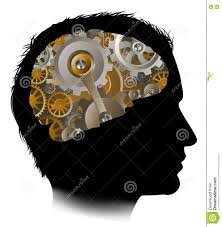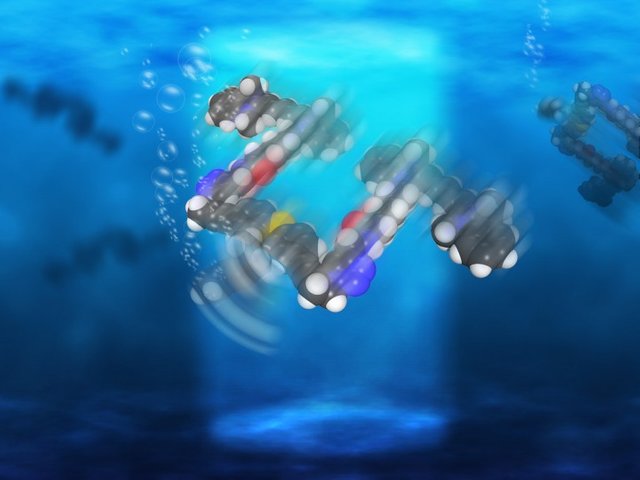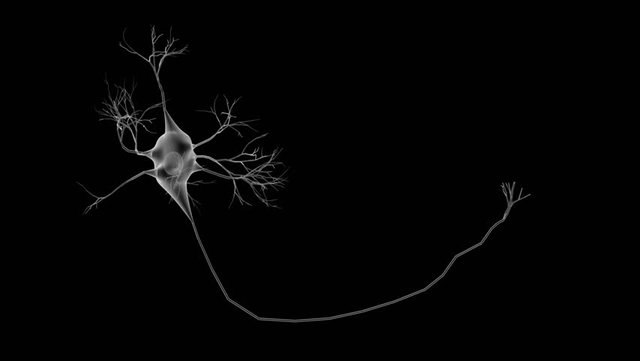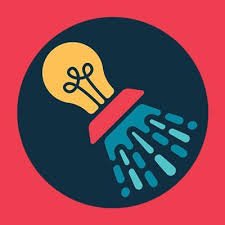Mapping the Human Brain: A Science Fiction Short Story, part 2
Mapping the Human Brain
Read Part 1 here.
Part 2
Louis zoomed out again, and everyone could see the sparkling city-like rhythm. One hundred billion residents lived here, each sending phone calls and telegraphs to as many or as few of the other residents as the individual preferred. How magical it was that we could finally start to know the networks of communication and even peek at what was being said! The lights flashed like heartbeats, the colors moved like cars on a highway. Blue, dopamine; yellow, GABA; red, serotonin; green, glutamate; pink, acetylcholine; and black, neurepinephrine. White flashes, so many it distorted the order of the other colors, marked each and every action potential. For clarity’s sake, he filtered white out. All this flash of movement from a distance appeared orchestrated ---- choreographed. And how beautifully they danced, the little flashes of light and wonder in everyone’s head, made visible in full for the first time here.

Louis zoomed out again, and everyone could
see the sparkling city-like rhythm.
Looking at it, Louis began to wonder for exactly how much of his dancing lights he was the choreographer. A lot of the color flow was a constant two-way stream, the rhythmic regular release of tropic pacemaking impulses. A lot of it seemed automatic, controlled by some entity other than conscious thought. How much did he control? In a way, he was in total control of this moment. He controlled what he wore, where he stood, and there were no obstacles blocking his pacing path. He controlled what his audience heard, what they saw, and they were obligated to stay for the duration of the defense no matter what appeared on the projection or what he said. But he felt on the edge of a precipice, about to fall into total chaos. A few different life paths stretched before him, each uniquely attractive and mutually exclusive from the others. He wondered what his brain looked like at this moment of indecision, and he wondered if peeking at the inner workings of the machine would hint at the correct output.

He wondered if peeking at the inner workings
of the machine would hint at the correct output.
Louis wakened from these thoughts in some private corner of his mind at the realization of the approaching critical point in the presentation, the discussion of methods. Each holographic light and spark of brain exploded in a flashy display of digital pyrotechnics at his press of a button. What remained regrouped into an atom-level display of a single molecular nanoscale robot. This 244 atom device is what kept a constant measure of the seven subjects’ brains for a period of two weeks .

What remained regrouped into an atom-level
display of a single molecular nanoscale robot
The device was light-driven. It operated by turning a flagellum-like double bond holding the rotor to the body into a single bond, which rotated it a quarter turn. Seeking a lower energy state, it adjacent atoms jumped also for further quarter turns, and the projected image zoomed across the table in straight line. It did an excellently smooth turn in front of the suit-clad gentlemen’s faces and returned to position where it proceeded to cleave in two and self-replicate for a total of 175 copies. These were sorted into seven groups of twenty-five, and Louis explained that the groups were organized on the basis of front-end sensors, a component on each device now lit either blue, yellow, red, green, pink, black, or white. Each type capable of detecting a different neurotransmitter, save for the white one, which can detect the electrical impulses of action potentials. Injected through the eye and traveling through the optic pathway, each little robot found its preprogrammed location in the holographic brain. The twenty-five copies of each type were evenly distributed throughout the four lobes, the pons, and the cerebellum.
Louis now preemptively answered a question, stating that, no, the nanobots did not take measurements from each individual neuron, at least not at first. That is, each nanobot transmitted data from the fraction of brain volume it was placed for the neurotransmitter or impulse it was programmed. Then, after a day or two, cells defined themselves, based on repeated routes of action potential propagation; synaptic clefts defined themselves according to where vesicles typically release and bind. The connectomic program followed a machine-learning paradigm to recognize these patterns and draw successively better models, eventually delineating precise locations of individual neurons. The two week recording period was necessary to give the machine-learning model time to acclimate, and it was appropriate because the measuring device only remained stable in vivo for up to two weeks before it broke apart and dissolved fully into the blood. A single neuron replaced the nanobots on the holograph.

A single neuron
Of course, he continued, this is only half the battle. We had the brain-states, but we still needed a way to track them to subjective experiences. All subjects wore biometric physiological monitors: A heartrate monitor, a sweat conductance device on their hands, and several accelerometers to measure movements. Some subjects even wore video cameras mounted to their heads. These measurements were transmitted to a backpack they wore at nearly all times. This backpack-computer also received all the data from the nanobots, updated on the scale of fractions of milliseconds. Subjects remained wired to the backpack, even while they slept, remaining connected but resting the backpack on a nightstand table. They were only allowed a ten minute respite each morning to shower, the assumption being no unusual brain activities occurred in the shower and that these daily ten minutes of data collection could be spared for the sake of hygiene. Louis thought about the enhanced insight and epiphanies he experienced while under flowing water and imagined for a second experiment parameters that would allow for observation in the shower.

Louis thought about the enhanced insight
and epiphanies he experienced while under flowing water
Subjects were told to go about their normal daily activities, with the backpack on, save for a three hour period every afternoon in which they were told to complete a series of activities, to sync up the measurements between subjects for at least that long. Completion of the activities was confirmed with the accompanying biometric data, as well as by comparing the timelogged brainstates to see if they were similar enough from subject to subject.
--------------
If you'd like to read more, here's a short flash fiction piece I wrote, and here's a piece I wrote from the perspective of an omniscient, omnipotent being.
This post has received gratitude of 1.00 % from @jout
Thanks! Do you have any feedback or critiques?
You got a 0.35% upvote from @postpromoter courtesy of @jout!